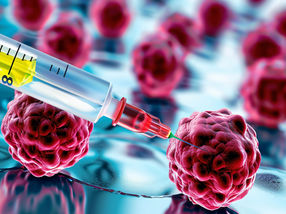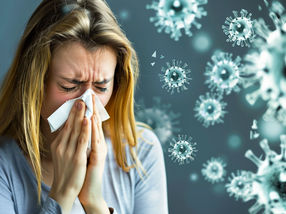Sanofi Pasteur announces favorable Phase II data for investigational C. difficile vaccine
Sanofi Pasteur presented Phase II (H-030-012) trial results for an investigational vaccine for the prevention of Clostridium difficile (C. diff) infection (CDI) at the 114th General Meeting of the American Society for Microbiology (ASM). The Phase II trial met its primary objectives, reactions were generally mild and of short duration, and the candidate vaccine generated an immune response against C. diff toxins A and B. These toxins are largely responsible for CDI, which can cause potentially life-threatening gut inflammation and diarrhea.
Based on the Phase II results, a high-dose plus adjuvant vaccine formulation administered on days 0, 7 and 30 was selected for further evaluation in the global efficacy program Cdiffense. This ongoing Phase III trial began in August 2013 with plans to include up to 200 sites in 17 countries.
"C. diff infection threatens the many people who frequently use antibiotics, as well as older hospitalized patients and residents in long-term healthcare facilities," said Jamshid Saleh, M.D., who participated in Phase II and is currently the principal investigator in the Phase III trial at Northern California Clinical Research Center in Redding, California. "It would be great if we could offer patients a way to help prevent this contagious and debilitating disease versus just treating it after it happens."
The Phase II vaccine study was a randomized, multi-center trial split into two stages. The first, conducted with 455 volunteers, was placebo-controlled, double-blind and designed for dose and formulation selection. The second, which included 206 additional volunteers, was designed to compare the dose and formulation chosen in the first stage against two alternate dosing schedules. Volunteers in the study were adults aged 40-75 years who were at risk of CDI due to impending hospitalization or residence in a long-term healthcare facility.
"In this trial, we saw a significant increase in antibody production against C. diff toxins, across all dosing schedules and volunteer ages," said Guy De Bruyn, MBBCh MPH, Director, Clinical Development, Sanofi Pasteur, who presented the data at ASM. "These results provide a strong foundation for our efforts to develop and offer a vaccine to prevent first occurrence CDI."
In Stage 1 of this trial, volunteers were randomized into one of five study groups: high-dose or low-dose vaccine either with or without adjuvant, or placebo. Each formulation was administered on days 0, 7 and 30. Immune responses were measured using both Enzyme Linked Immunosorbent Assay (ELISA), which assesses anti-toxin A and B immunoglobulin G (IgG) concentrations, and Toxin Neutralization Activity (TNA), which measures anti-toxin A and B neutralizing activity. Composite ELISA ranking analysis determined that the high-dose plus adjuvant vaccine formulation (Group 3) generated the greatest immune response over a 60-day period. ELISA results also showed four-fold increases in the development of detectable antibodies for both toxins A and B.
The high-dose plus adjuvant vaccine formulation was then selected for further study in Stage 2 of the trial, which compared its use across three schedules: days 0, 7 and 30 (Group 3, N=101); days 0, 7 and 180 (Group 6, N=103); and days 0, 30 and 180 (Group 7, N=103). Analysis was conducted on days 0, 7, 14, 30, 60, 180 and 210.
Increased immune responses were observed in all vaccine groups and with each dose, according to ELISA and TNA. Overall, Group 3 demonstrated the most favorable immune profile over the 30-, 60- and 180-day periods, particularly in volunteers aged 65-75 years.
The safety profile of all vaccine doses was deemed acceptable throughout the Phase II study. Reactions were monitored until day 210 and were generally Grade 1 (classified as mild), of short duration, did not lead to study discontinuations, and were not considered clinically significant.

























































